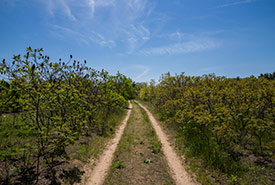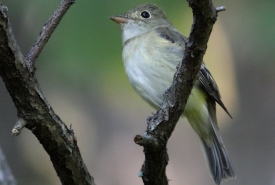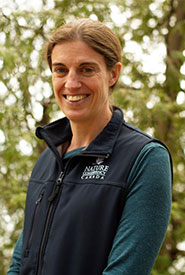Conservation on a budget

Lake Erie Farms (Photo by NCC)
This spring, conservation staff from the Nature Conservancy of Canada (NCC) contributed to a study that looked at the most cost-efficient ways to monitor restoration success in Ontario. So what, you may ask? Let me back up a bit and provide some context.
The main reason for the decline in many species is quite simply habitat loss — loss of places for animals and plants to find food, grow, reproduce and safely over-winter or fuel-up during migration. The protection of habitat in southern Ontario often requires the restoration of adjacent land that has been degraded by human activity.
Related content
When NCC acquired the Lake Erie Farms property (located in Norfolk County) in 2003, the main goal was to protect its forest and ravine ecosystems. However, parts of the property had been farmed since 1925, and these areas supported limited habitat for wildlife.

Acadian flycatcher (Photo by Bill Hubick)
Our property management plan identified the need to restore these agricultural fields to add to the existing high-quality habitat already protected on the property. This would increase the amount of natural habitat on the approximately 162-hectare (400-acre) property by about 60 hectares (148 acres)! This expansion is exactly what rare species need. Birds such as wood thrush, Acadian flycatcher and Louisiana waterthrush need fairly large blocks of forest, which have become sparse on the landscape.
Conservation and economics often go hand in hand, and re-establishing native plant communities in former agricultural areas isn’t cheap. As a result, it is really important to make sure that our work actually works. This is where monitoring comes in — checking up on whether the seeds we planted germinated, and whether we have in fact created new, functional wildlife habitat. Monitoring, though, can also be time consuming and expensive.
When monitoring, it is important to determine what we must know and how little time we can invest to still get the data we need. For example, monitoring allows us to detect the establishment of non-native plants, which allows us to take quick action to remove them.
Working with honours and graduate students and professors at the University of Waterloo and the University of Western Ontario, data collected by NCC staff, summer interns and volunteers over the last 10 years was analyzed and recently published in the peer-reviewed journal Restoration Ecology.
This paper showed that, in theory, five years after restoration we could reduce our monitoring frequency and the number of plots sampled and still get an accurate picture of the change in plant communities over time. While simple, these findings are important and will guide our monitoring efforts here and at other similar sites into the future. This will save staff time so that we can do more great conservation work, including making more habitat for those rare forest birds and the many other animals that need our help.
To learn more, read the abstract here.


